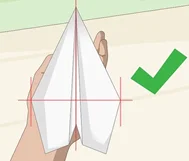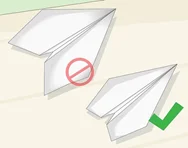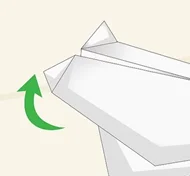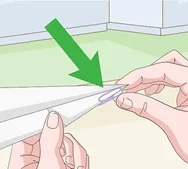Paper-clip pilot help
1. Make sure the wings are symmetrical.

2. Make sure the wings are shorter.

3. Bend the back end of nosediving planes upwards. Stable paper airplanes fly farther and faster. Paper airplanes typically benefit from adding what’s known as up elevator. Take the back end of the airplane, which on a standard dart-shaped plane is the wing tips and use your finger to bend them upwards a little. This counterbalances the weight in the nose of your plane.

4. Weigh down the nose on stalling planes. Most planes also benefit from a little weight in the nose. This helps balance the plane, so it doesn’t have a tendency to fly straight up. Cover the nose in a layer or two of tape or add a paper clip. Test the plane and make adjustments as necessary.
Most airplanes are better off being slightly nose heavy rather than slightly tail heavy.
Heavier planes are better at withstanding outdoor flight.

This video shows what happens when a paperclip is added to a typical paper plane.